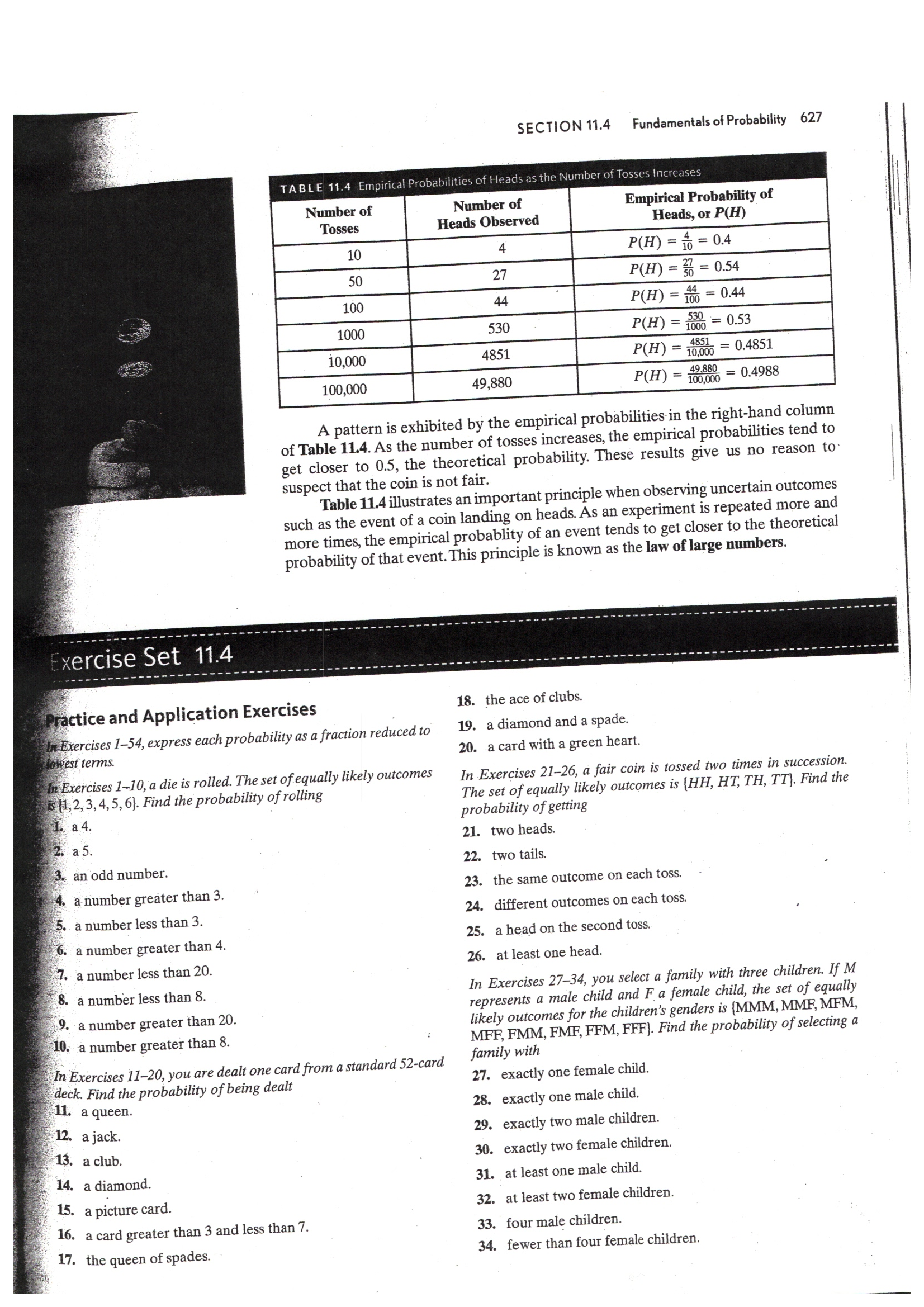Answer questions 1-20. please show explanation
SECTION 11.4 Fundamentals of Probability 627 TABLE 11.4 Empirical Probabilities of Heads as the Number of Tosses Increases Number of Number of Empirical Probability of Tosses Heads Observed Heads, or P(H) 10 4 P(H) = 10 = 0.4 50 27 P(H) = 30 = 0.54 100 44 P(H) = 100 = 0.44 1000 530 P(H) = 10 = 0.53 0,00 4851 P(H) = $4851 = 0.4851 100,000 49,880 P(H) = = 0.4988 A pattern is exhibited by the empirical probabilities in the right-hand column of Table 11.4. As the number of tosses increases, the empirical probabilities tend to get closer to 0.5, the theoretical probability. These results give us no reason to suspect that the coin is not fair. Table 11.4 illustrates an important principle when observing uncertain outcomes such as the event of a coin landing on heads. As an experiment is repeated more and more times, the empirical probablety of an event tends to get closer to the theoretical probability of that event. This principle is known as the law of large numbers. Exercise Set 11.4 Practice and Application Exercises 18. the ace of clubs. In Exercises 1-54, express each probability as a fraction reduced to 19. a diamond and a spade. lowest terms. 20. a card with a green heart. In Exercises 1-10, a die is rolled. The set of equally likely outcomes is [1, 2, 3, 4, 5, 6). Find the probability of rolling In Exercises 21-26, a fair coin is tossed two times in succession. The set of equally likely outcomes is {HH, HT, TH, TT). Find the 1. a 4. probability of getting a 5. 21. two heads. 3. an odd number. 22. two tails. a number greater than 3. 23. the same outcome on each toss. a number less than 3 24. different outcomes on each toss. a number greater than 4. 25. a head on the second toss. a number less than 20. 26. at least one head. a number less than 8. In Exercises 27-34, you select a family with three children. If M a number greater than 20. represents a male child and F a female child, the set of equally 10. a number greater than 8. likely outcomes for the children's genders is {MMM, MMF, MFM, MFF, FMM, FMF, FFM, FFF). Find the probability of selecting a In Exercises 11-20, you are dealt one card from a standard 52-card family with deck. Find the probability of being dealt 27. exactly one female child. 11. a queen. 28. exactly one male child. 12. a jack. 29. exactly two male children. 13. a club. 30. exactly two female children. 14. a diamond. 31. at least one male child 5. a picture card. 32. at least two female children. 16. a card greater than 3 and less than 7. 33. four male children. 17. the queen of spades. 34. fewer than four female children







